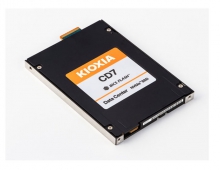
HP Hopes To Replace Flash And SSD With Memristor Memory by 2013
HP plans to use an alternative technology to flash on the market in eighteen months, an alternative to DRAM in three to four years and, following DRAM, a replacement for SRAM.
In cooperation with Hynix, HP's goal is to bring a memristor product to market in 2013.
The technology allows the memory layers to be put directly on top of the processor layer making for very fast systems on chip. Memristor is a thin film technology which allows stacking of many number of layers, with 500 bn memristors per layer at 5nm.
"We're planning to put a replacement chip on the market to go up against flash within a year and a half," said Stan Williams, Senior Fellow at HP, at the International Electronics Forum 2011 meeting in Seville earlier this week. "We also intend to have an SSD replacement available in a year and a half," he added. "In 2014 possibly, or certainly by 2015, we will have a competitor for DRAM and then we'll replace SRAM."
HP's represetative added that "flash is a done deal," and that "we?re going after DRAM, and we think we can do two orders of magnitude improvement in terms of switching energy per bit."
Last year, Hynix Semiconductor entered into a joint development agreement with HP to develop memristor technology in ReRAM (Resistive Random Access Memory). The two companies have jointly developed new materials and process integration to deliver ReRAM to market by transferring the memristor technology from research to commercial development.
The ReRAM is a product that holds potential to replace the Flash memory currently used in mobile phones and MP3 players and to serve as a universal storage medium - that is, memory that can behave as Flash, DRAM or even a hard drive.
The memristor, short for "memory resistor," requires less energy to operate, can retain information even when power is off, and is faster than present solid-state storage technologies.
"We're planning to put a replacement chip on the market to go up against flash within a year and a half," said Stan Williams, Senior Fellow at HP, at the International Electronics Forum 2011 meeting in Seville earlier this week. "We also intend to have an SSD replacement available in a year and a half," he added. "In 2014 possibly, or certainly by 2015, we will have a competitor for DRAM and then we'll replace SRAM."
HP's represetative added that "flash is a done deal," and that "we?re going after DRAM, and we think we can do two orders of magnitude improvement in terms of switching energy per bit."
Last year, Hynix Semiconductor entered into a joint development agreement with HP to develop memristor technology in ReRAM (Resistive Random Access Memory). The two companies have jointly developed new materials and process integration to deliver ReRAM to market by transferring the memristor technology from research to commercial development.
The ReRAM is a product that holds potential to replace the Flash memory currently used in mobile phones and MP3 players and to serve as a universal storage medium - that is, memory that can behave as Flash, DRAM or even a hard drive.
The memristor, short for "memory resistor," requires less energy to operate, can retain information even when power is off, and is faster than present solid-state storage technologies.





















